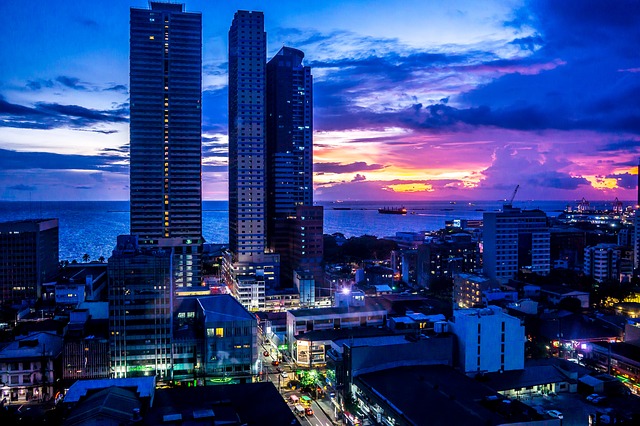
-
Metro Manila will have shorter curfew hours–10pm to 4am–as it undergoes pilot implementation of the new alert level system from September 16
-
The current curfew runs from 8pm to 4am
-
The Metro Manila Council composed of all National Capital Region mayors agreed on the new curfew hours
The Metro Manila Council approved shorter curfew hours of 10 pm to 4 am for the National Capital Region starting September 16, according to Metropolitan Manila Development Authority (MMDA) chairman Benhur Abalos.
The current curfew hours run from 8 pm to 4 am.
Metro Manila will transition from the enhanced community quarantine to Alert Level 4 from September 16 to 30 under a new alert level system being pilot tested to curb the further spread of COVID-19 and its variants.
READ: NCR under Alert Level 4 starting Sep 16
The government earlier said the objective of the pilot implementation is to assess if “granular” or small-scale lockdowns could more effectively reduce transmissions than wide-scale community quarantines, which are seen to be no longer effective.
Under the guidelines, there will be five alert levels under the new alert level system:
- Alert Level 1 – areas wherein case transmission is low and decreasing, total bed utilization rate is low, and intensive care unit utilization rate is low
- Alert Level 2 – areas wherein case transmission is low and decreasing, healthcare utilization is low, or case counts are low but increasing, or case counts are low and decreasing but total bed utilization rate and intensive care unit utilization rate are increasing
- Alert Level 3 – areas wherein case counts are high and/or increasing, with total bed utilization rate and intensive care unit utilization rate increasing
- Alert Level 4 – areas wherein case counts are high and/or increasing, with total bed utilization rate and intensive care unit utilization rate at high levels
- Alert Level 5 – areas wherein case counts are alarming, with total bed utilization rate and intensive care unit utilization rate at critical levels
Areas placed under Alert Level 5 should observe guidelines applicable to ECQ.
For Level 4, establishments and/or activities characterized as high risk for transmission will not be allowed to operate.
For Level 3, certain establishments or activities will be allowed to operate, or be undertaken at a maximum of 30% on-site or venue/seating capacity.
For Level 2, except those located in areas under granular lockdowns, certain establishments, persons, or activities will be allowed to operate, work, or be undertaken at a maximum of 50% on-site or venue/seating capacity.
Certain business establishments in areas under Levels 3 and 2 that are awarded Safety Seal Certifications will be allowed to operate at an additional 10% beyond the prescribed on-site or venue/seating capacity, whichever is applicable.
For Level 1, all establishments, persons, or activities, except for those located in areas under granular lockdowns, are allowed to operate, work, or be undertaken at full on-site or venue/seating capacity but consistent with minimum public health standards.
Granular lockdown, meanwhile, refers to a micro-level quarantine for areas identified as “critical zones” by the local government unit (LGU) and may be declared regardless of the alert level.
The Department of Health will identify the alert levels for the pilot area. During the pilot implementation, classification of the pilot area will be done weekly.
Regardless of the vaccination status and possession of a negative COVID-19 test result, close contacts of probable and confirmed COVID-19 cases will undergo a 14-day quarantine.
Minimum public health standards should be implemented at all times.
The authority to impose granular lockdowns is given to city and municipal mayors. Granular lockdowns may be imposed on residential buildings, streets, blocks, puroks, subdivisions, and/or villages for a period of not less than 14 days.
The list of Authorized Persons Outside Residences (APOR) under the Inter-Agency Task Force (IATF) Omnibus Guidelines on the Implementation of Community Quarantine in the Philippines, as amended, will not apply in areas under granular lockdowns.
Only health care workers and non-health personnel working in hospitals, laboratories, and dialysis facilities whose institutions are unable to provide accommodation for their personnel, and uniformed personnel tasked to enforce the granular lockdown, will be allowed to move within, into, and out of the area under granular lockdown.
The following will also be allowed to enter and/or exit granular lockdown areas for specific purposes:
- Overseas Filipino Workers bound for international travel and those returning to their respective residences after having completed facility-based quarantine upon arrival
- Individuals whose home or residence is located within an area under granular lockdown may enter the said area solely to return to their respective homes or residences but must remain there for the duration of the granular lockdown
- Individuals under exceptional circumstances such as, but not limited to, those seeking urgent medical attention as validated by the municipal/city health officer
- Food and essential items that are intended for delivery within an area under granular lockdown provided they are unloaded at border collection points designated by the LGU.




